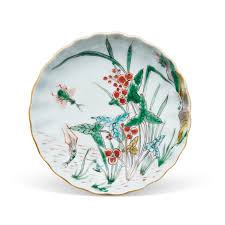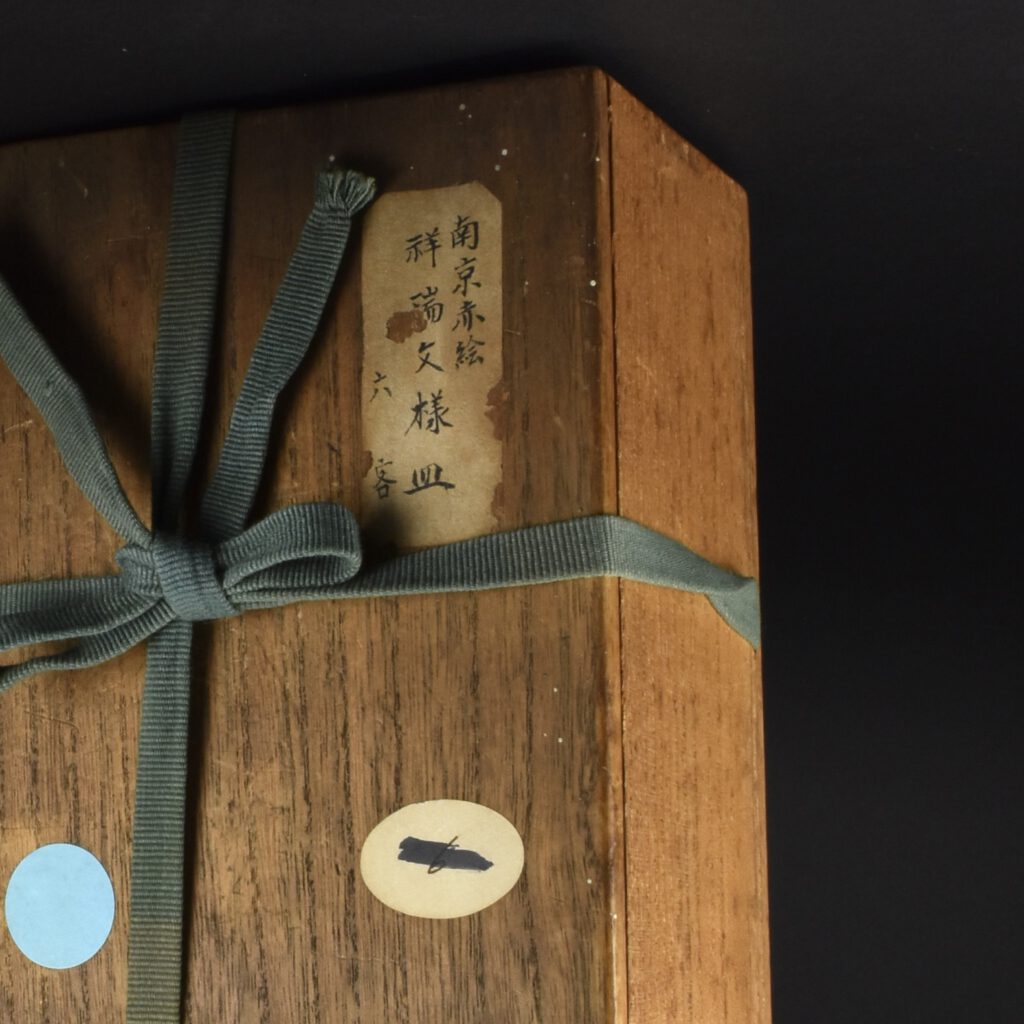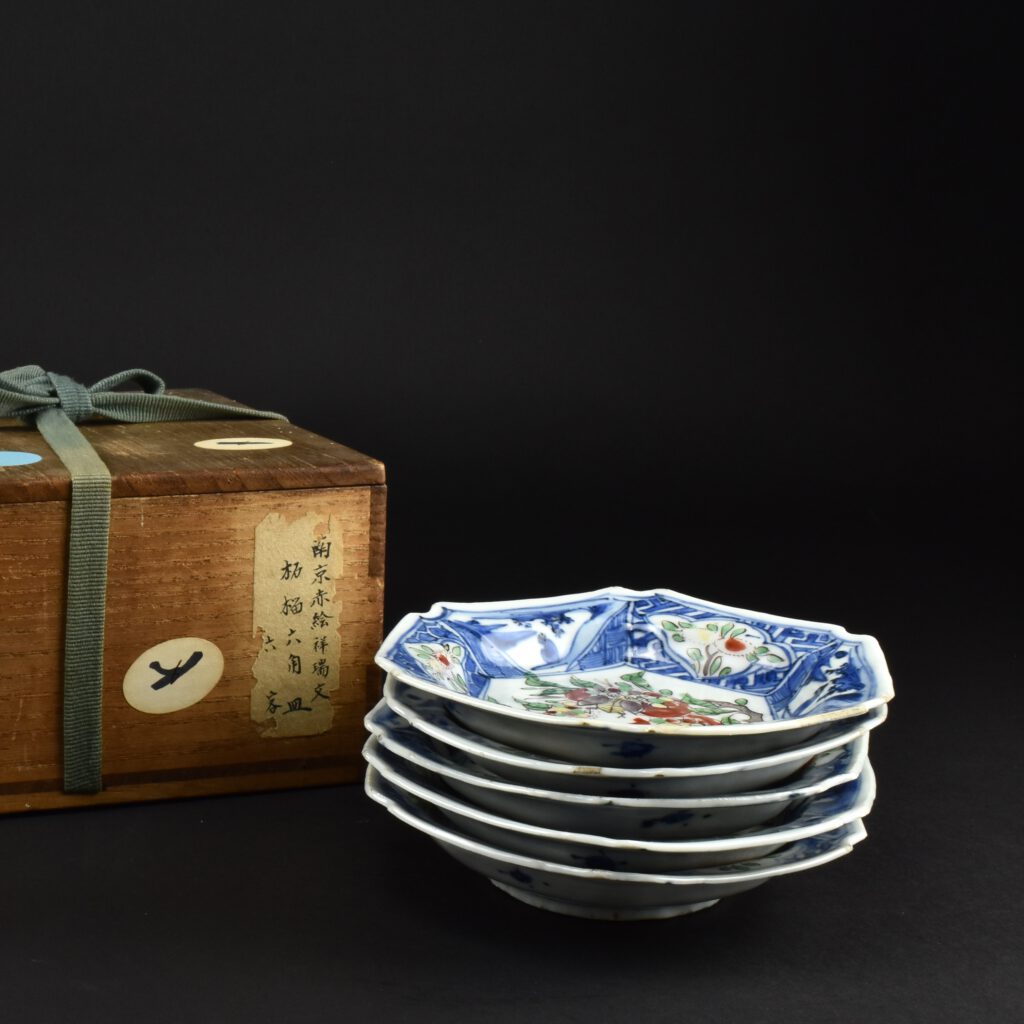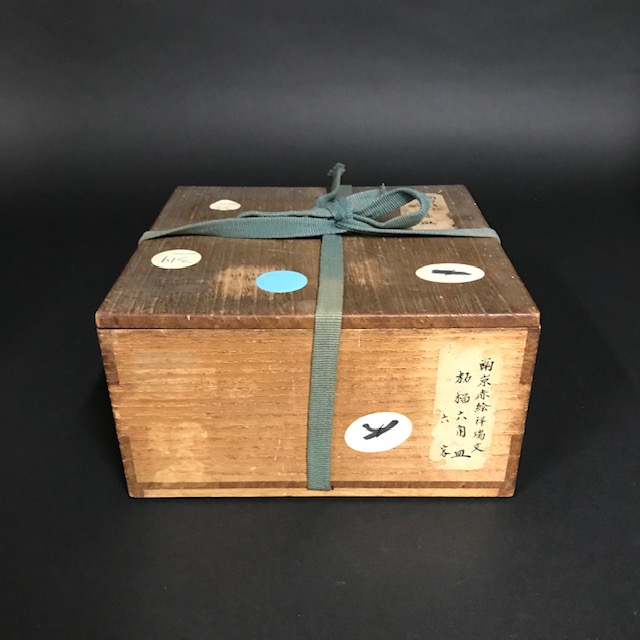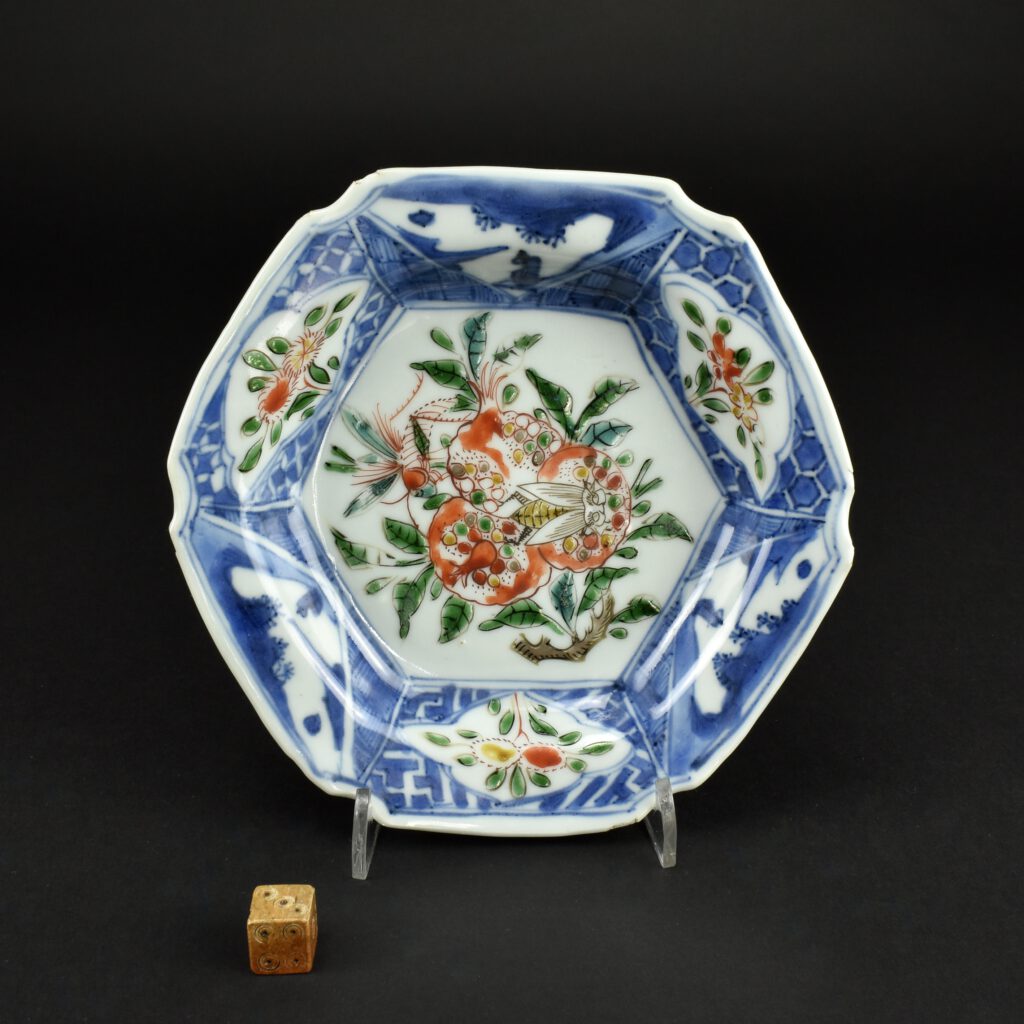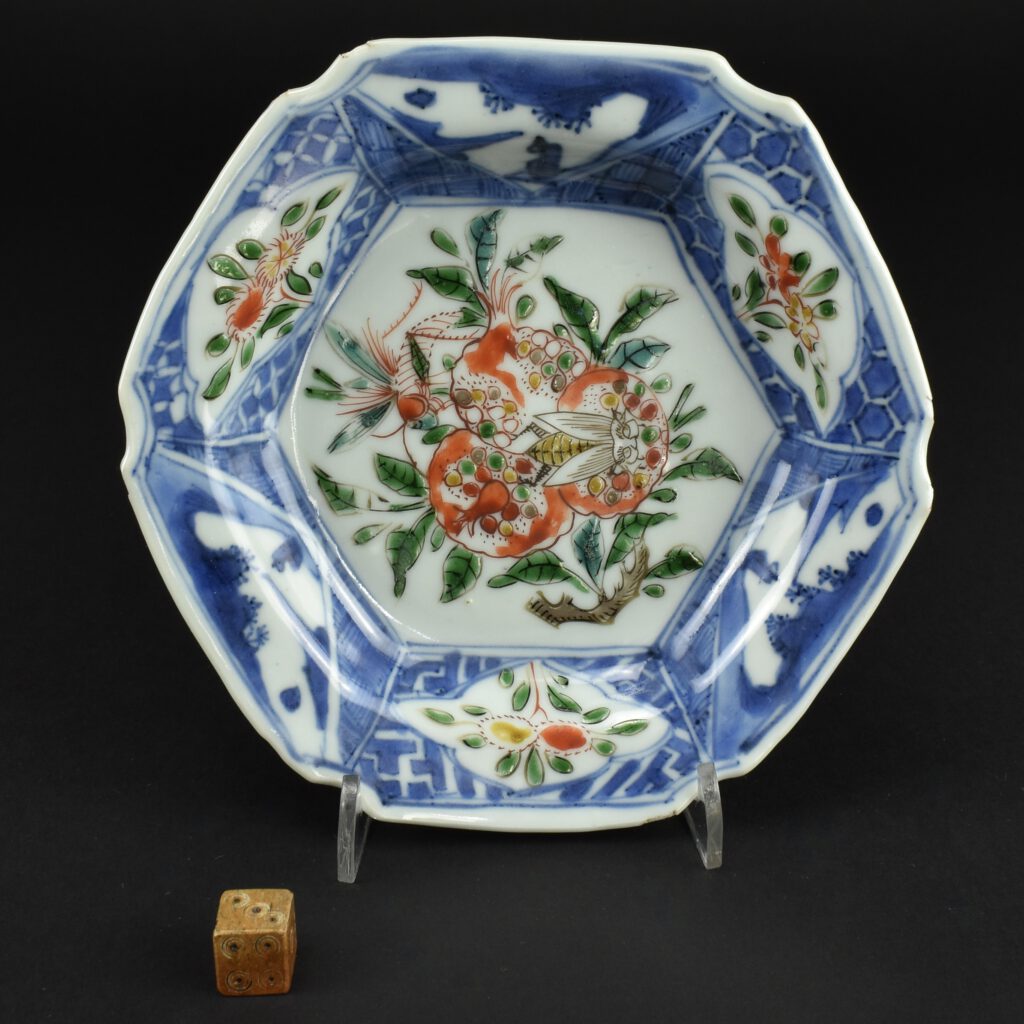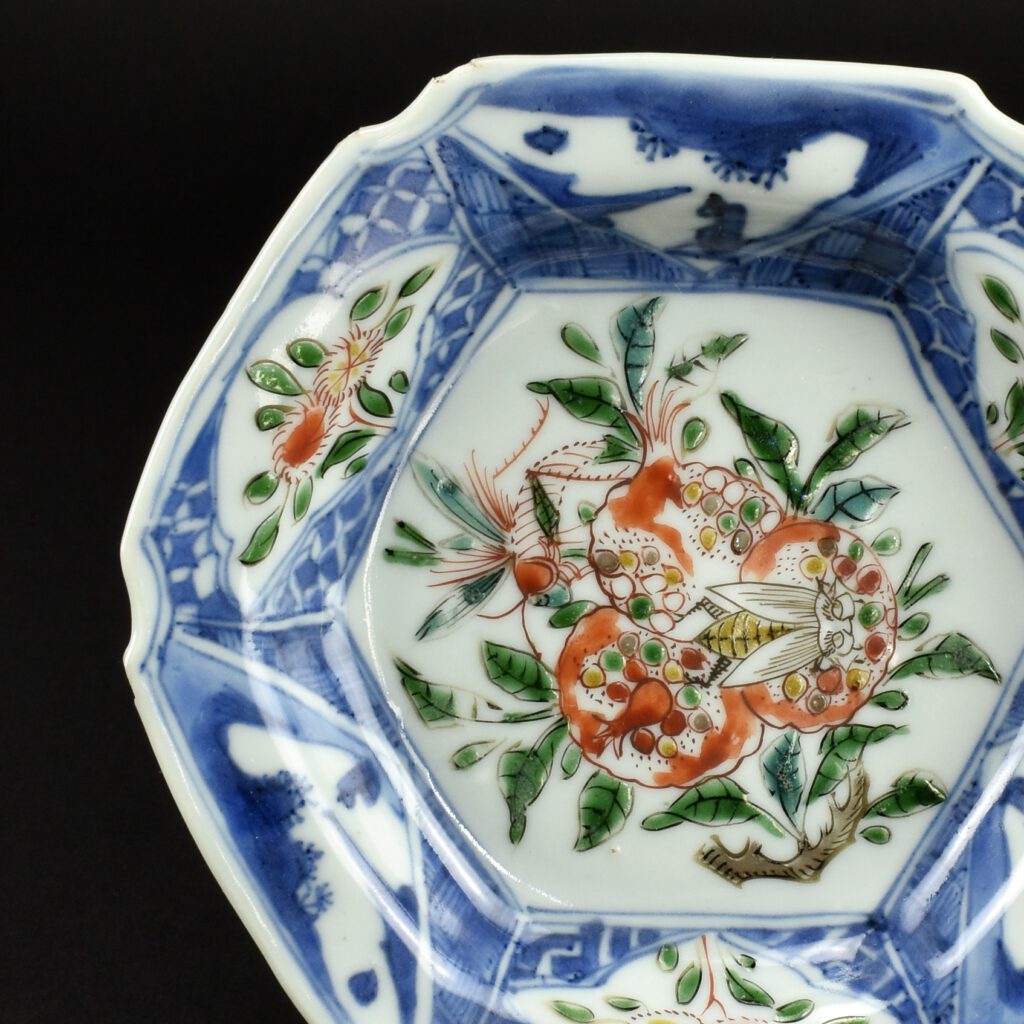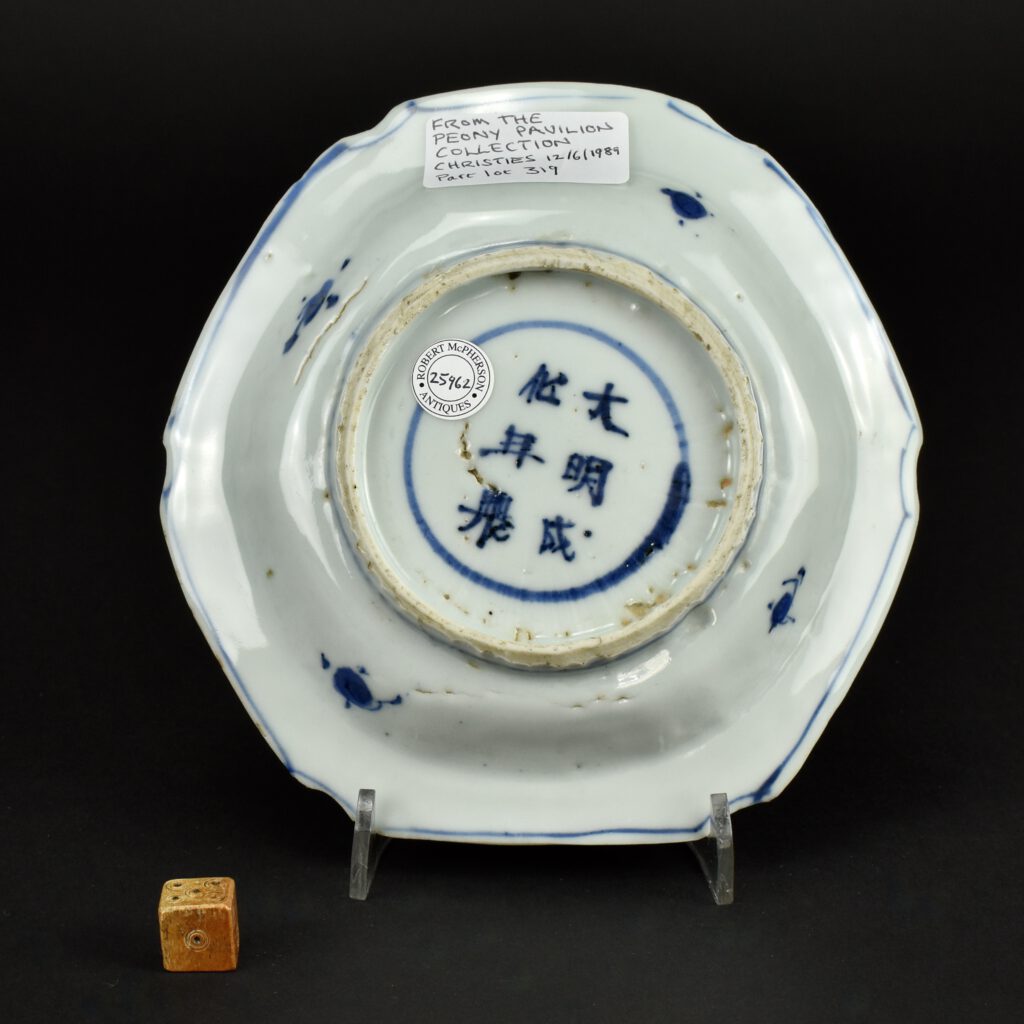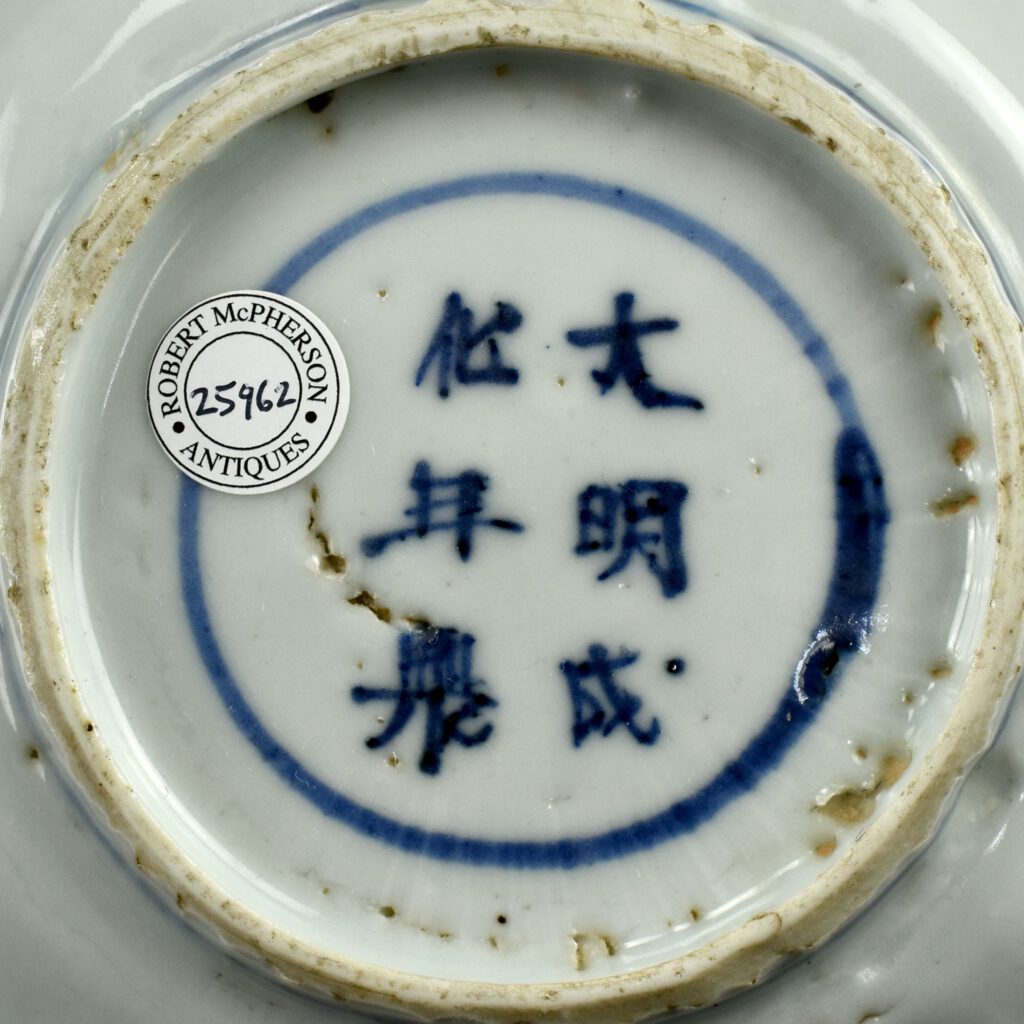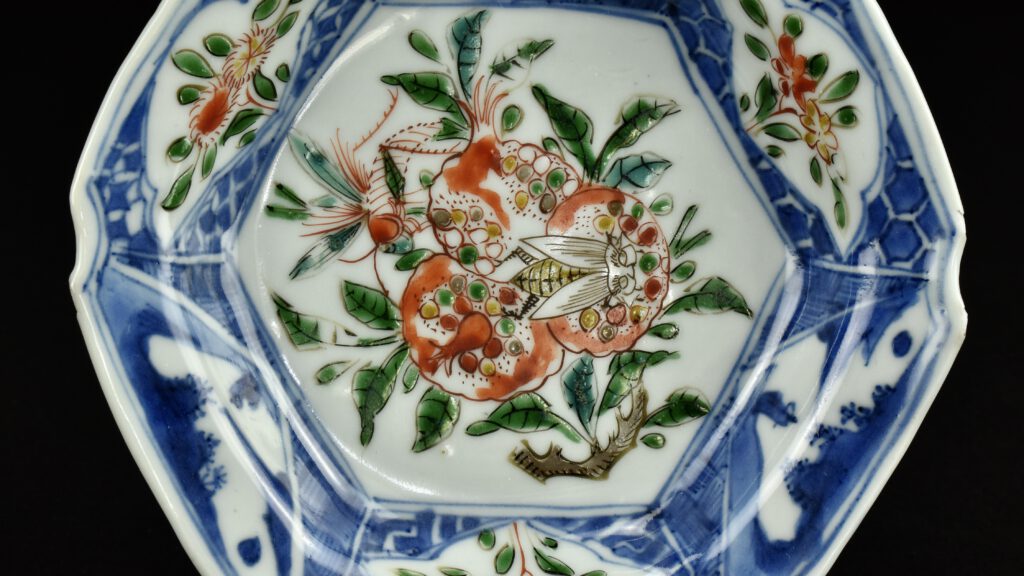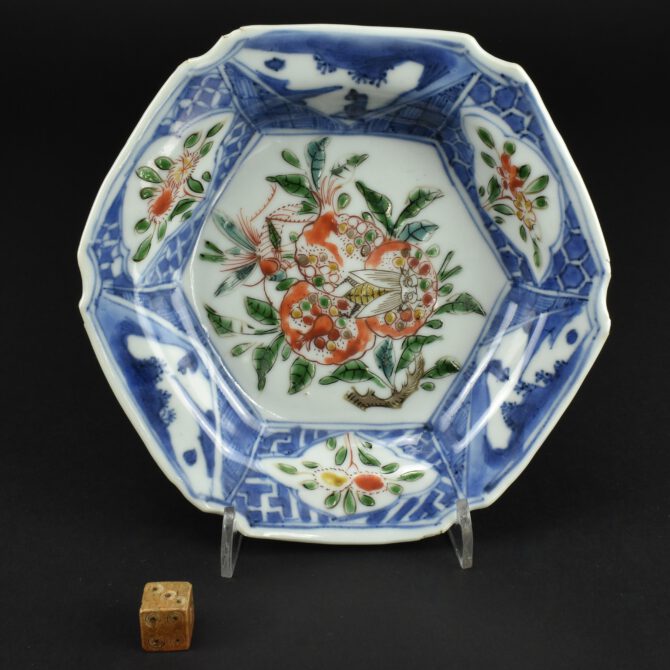
Ming Porcelain Dish for the Japanese Market from The Peony Pavilion Collection
A Transitional Porcelain Dish Made for the Japanese Market, Jingdezhen Kilns, Ming Dynasty, Tianqi 1621 – 1628 or Chongzhen Period 1628 – 1644. The base with an apocryphal Chenghua mark (Ming dynasty 1465-1487). This Ming porcelain Mukozuke (literally meaning beyond server) dish was made in for the Kaiseki meal that accompanies the Japanese tea ceremony. The hexagonal shallow form has indented corners with a flat broad rim painted in underglaze blue. This blue underglaze decoration is reminiscent of Kraak porcelain, this is perhaps unsurprising as Kraak ware was popular in 17th century Japan. Indeed, recent research has shown that some kilns in Jingdezhen produced porcelain for the Japanese market also made Kraak ware. The overglaze colours consist of a thickly applied translucent green enamel, a similar but paler green, there is also mustard yellow and aubergine. The red and black decoration is different, it sits flat on the surface of the porcelain, perhaps suggesting little or no glass binder was used. The central decoration depicts a pomegranate branch with three ripe pomegranates bursting open, their seeds of differing colours. A cicada and a grasshopper are feasting on the sweet open fruit. The cavetto has three cartouches decorated with flowering plants in enamel, colours set against a blue diaper patterns of cash (coins, meaning wealth), swastika (conducive to well-being) and a honeycomb design. The other three inverted triangular panels show a solitary seated figure on a promontory with a landscape in underglaze blue. This dish is the only one of the dishes from this group that has an six has an apocryphal Chenghua mark (Ming dynasty 1465-1487).
SOLD
See below for more photographs and Information.
- Condition
- In very good condition, some mushikui (insect nibble, or fritting) that are normally found on this type of porcelain. Firing faults to the back.
- Size
- Diameter 15 cm (5 3/4 inches).
- Provenance
- The Peony Pavilion Collection ; Chinese Tea Ceramics for Japan (c.1580-1650). Christie`s London 12th June 1989, lot 319, set of 6. From a Private Collection, this lot was purchased, this piece as well as many others, from the Christie's sale of 1989. I was able to buy the complete group from this private collection.
- Stock number
- 25962
- References
- Published in : The Peony Pavilion Collection ; Chinese Tea Ceramics for Japan (c.1580-1650). Christie`s London 12th June 1989, lot 319, set of 6, page 78. For a similar Ming dish dated to the Tianqi period but the center decoration incised see : Leaping The Dragon Gate, The Sir Michael Butler Collection of Seventeenth-Century Chinese Porcelain (Teresa Canepa and Katherine Butler, Ad Ilissvm. ISBN 978-1-912168-16-3. Published 2021). Page 150, plate III 1.204.
Information
Christie's Price :
Anyone who purchased one of our enamelled dishes from The Peony Pavilion Collection will be pleased to see that a single dish of the same pattern and size made £7,220 in Christie's Hong Kong ;
A RARE ENAMELLED SAUCER DISH
CHONGZHEN PERIOD (1628-1644)
The dish is moulded with fluted petals in the well and is decorated on the interior with a pond depicting a prawn beside flowering arrowheads, with an insect in flight. The base is inscribed with an apocryphal six-character Chenghua mark.
5 7/8 in. (15 cm.) diam.
Provenance : Butler Collection.
Christie's, Hong Kong, 29 Nov 2022
Lot 2941
Sold HKD 69,300 (£7,220).
